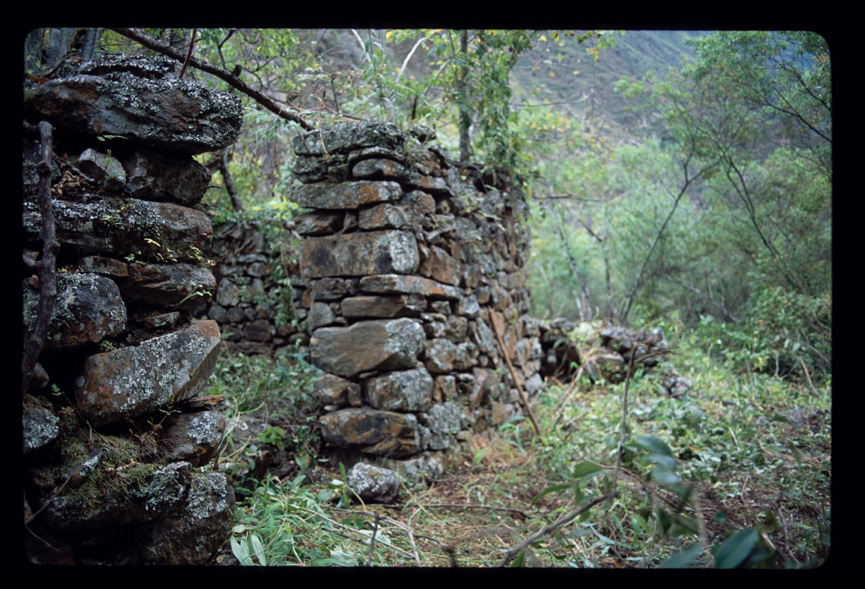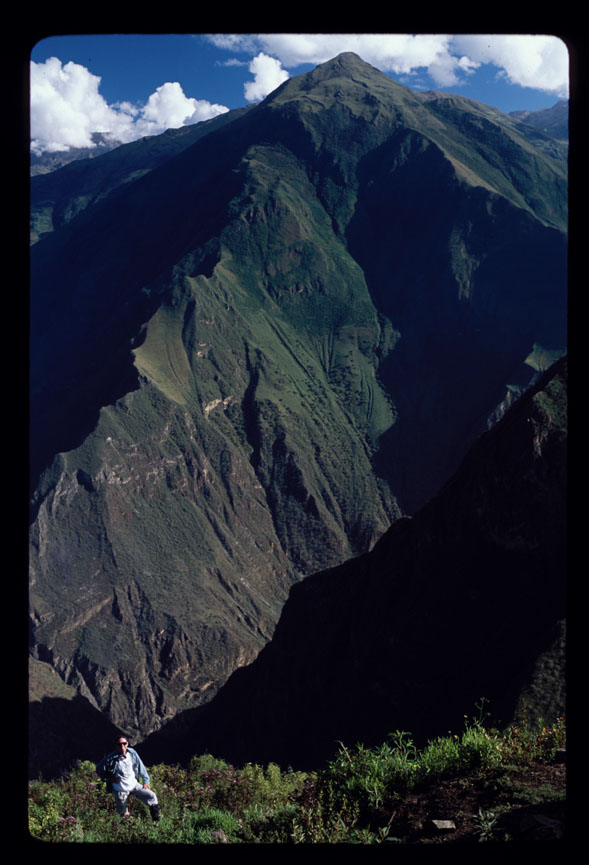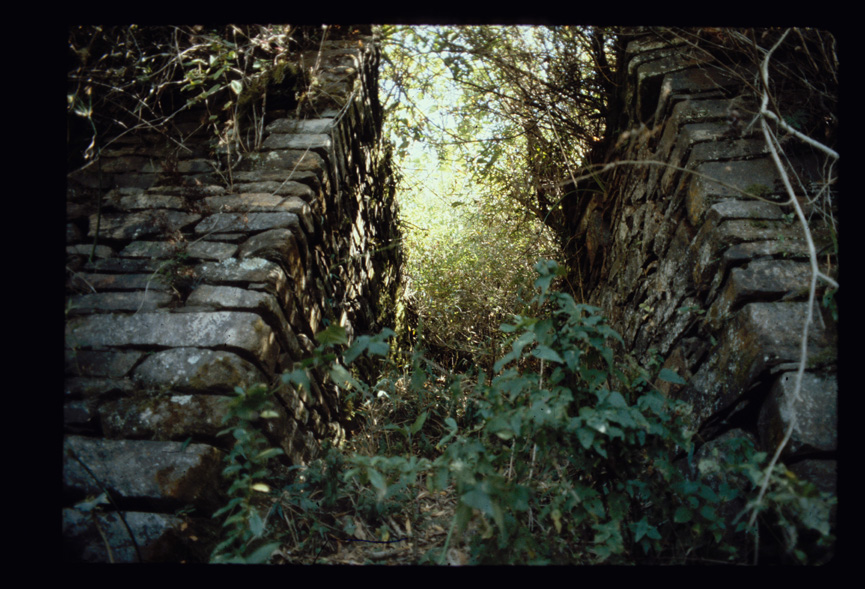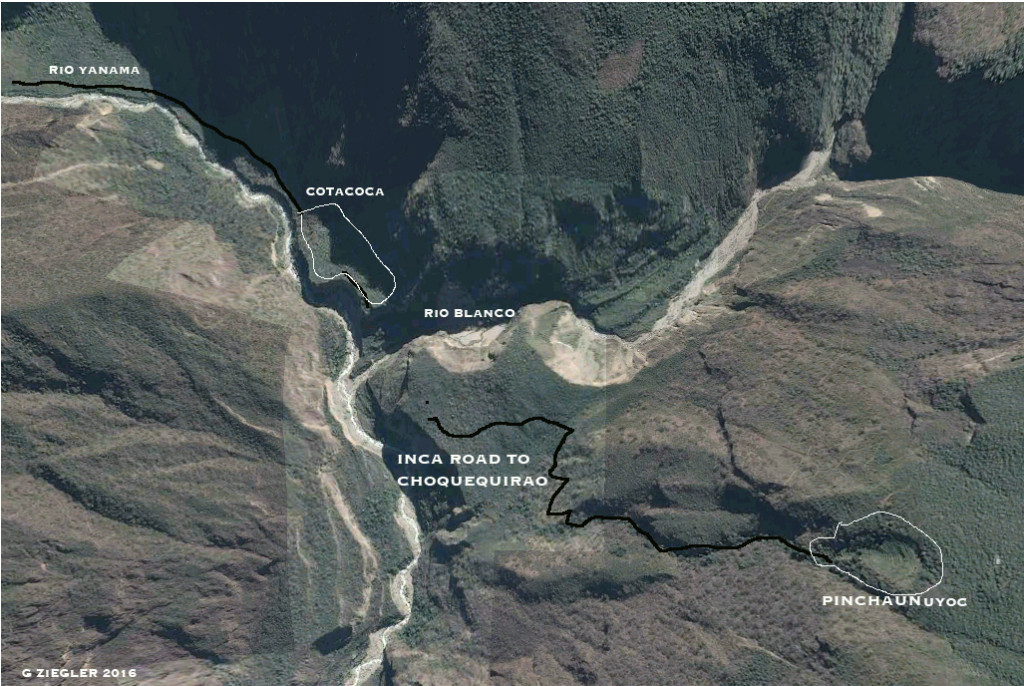Press Release
Major New Inca Site Discovered
London 11 a.m. Thursday June 6th, 2002: The Royal Geographical Society announced today that a new Inca site called Cota Coca has been discovered in Peru by a group of British and American explorers.
John Hemming, an international authority on the Incas and a previous Director of the Royal Geographical Society, commented: “This is an important discovery.”
The leaders of the expedition, the American archaeologist Gary Ziegler and the British writer and explorer Hugh Thomson, went with a team of experts and muleteers into the Peruvian Vilcabamba beyond Machu Picchu.
Acting on a rumour that Ziegler had heard from a muleteer on a previous trip, they made the difficult journey into some of the most remote territory in this part of the Andes, where the mountains slope down towards the Amazon cloud forest.
What they found was a substantial and completely unknown site, covered by dense forestation. Their team of muleteers used machetes to clear the many stone-built buildings arranged around a central plaza, so that they could be mapped and studied.

The Inca site at Cota Coca has been concealed for hundreds of years because it lies in an isolated valley. Severe erosion by the Yanama river over the centuries since the time of the Incas has created a steep river canyon, which is impassable along the valley bottom; the only way the team could reach it was to descend directly from the mountain above, cutting a trail down though the dense cloud-forest with their machetes.

Before the erosion of the valley walls, it appears there may have been an Inca road along the river linking the settlement with another of the great Inca cities, Choquequirao. It is likely the Incas would have used the site in their period of retreat from the Spanish after the Conquest of Peru in 1532, when they were hiding in the mountains until their final capitulation in 1572, forty years later.
Gary Ziegler and Hugh Thomson are two of the most experienced explorers working in this area: Ziegler, a Peruvian trained archaeologist specialising in Inca research who lives in Colorado, has been leading expeditions to Peru since the 1960s, while Thomson, based in Bristol, has recently written a book on the subject, The White Rock (Weidenfeld & Nicolson), and is a Fellow of The Royal Geographical Society.
Says Hugh Thomson, ‘the physical geography of South-east Peru is so wild, with its deep canyons and dense vegetation, that it is possible that there are even more ruins waiting to be discovered.’
.
Ziegler and Thomson are planning to return to the Vilcabamba area next year to look for further ruins.
Background
The team led by Gary Ziegler and Hugh Thomson included the veteran British explorer Nicholas Asheshov, who took part in the Brooks Baekeland Expedition of 1963, and the Australian explorer, John Leivers. Logistical support was coordinated by the British Consul in Cuzco, Barry Walker, and Peru based Manu Expeditions. The team also consisted of eight mule handlers, sixteen mules and seven horses, together with field helpers.

Cota Coca is situated at 1850 metres (over 6000 ft) near the junction of the Yanama and Blanco rivers in the Vilcabamba area of Eastern Peru. It is on an isolated bench or mesa some two kilometres long, left as an eroded remnant when the Rio Yanama river cut a deep chasm near its intersection with the Río Blanco.
The valley bottom is hot and semi tropical with a micro climate environment created by the deep canyon. Like the nearby Inca site of Choquequirao, the bed rock is an assortment of metamorphic muscovite schist and fine grained yellow quartzite. A considerable depth of alluvial deposit swept in by river flooding and canyon breakdown covers the valley floor. Much of this material is made up of igneous grey granite in the form of rounded river stones that have been carried downstream.
Cota Coca contains some thirty plus structures including a seventy-five foot long kallanka ( meeting hall ) grouped around a central plaza. Outside the central area are more well-made rectangular houses. Two large walled enclosures (approx 50 x 30 meters, 175′ x 100′) may have been holding pens for passing llama trains.
John Hemming, author of The Conquest of The Incas and the Director of The Royal Geographical Society for 21 years from 1975 to 1996, commented: “This is an important discovery, because it is a sizeable centre of good-quality late-Inca masonry. It also contains a kallanka meeting-hall or barracks, which is a standard Inca administrative building.”
A main Inca road passed near the site and down the Yanama valley, which has experienced much flooding and lowering of the water channel since Inca times. It is unlikely that the site was visited or known of following the fall of the last Inca, Tupac Amaru, in 1572.
However, one early explorer, the Comte de Sartiges, passed nearby in order to reach Choquequirao in 1834. He refers in his writing to the lower Yanama Valley “being known as Cotacoca”, although he did not find the ruins. The dense forestation means that it would be easy to miss them and he commented at the time that he “thought it unlikely anyone could have inhabited this narrow valley because of the numerous and voracious mosquitoes that have taken possession of it. It was impossible to breathe, drink or eat without absorbing quantities of these insufferable creatures.”

Indeed it is unlikely that any of the early visitors to Choquequirao found Cota Coca. Although the sites are only a few miles distant, they could be a world apart, across a deep canyon whose connecting Inca routes have long been lost and severed. The new site of Cota Coca has never been documented, reported or known to the outside world until this present investigation.
for more information see also the full report on Cota Coca
For picture of Hugh Thomson and Gary Ziegler
For news coverage of Cota Coca
.
SITE MAPS ADDED LATER:



Wow this really triggers me. I always wanted to go to the Inca ruins and temples, and explore all their ways.Their history facinates me.Every chance I get, I’m always looking for information or reading about them. I think there is still something big out there and well hidden. I wish I had the chance some day to go to Machu Picchu, and spend some time up there, and walk the forest and trails that they walked.